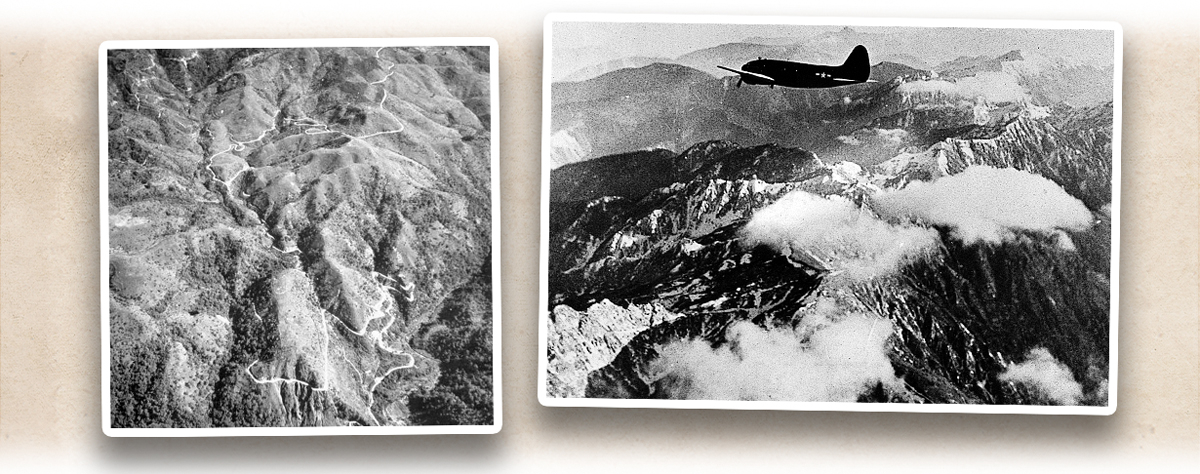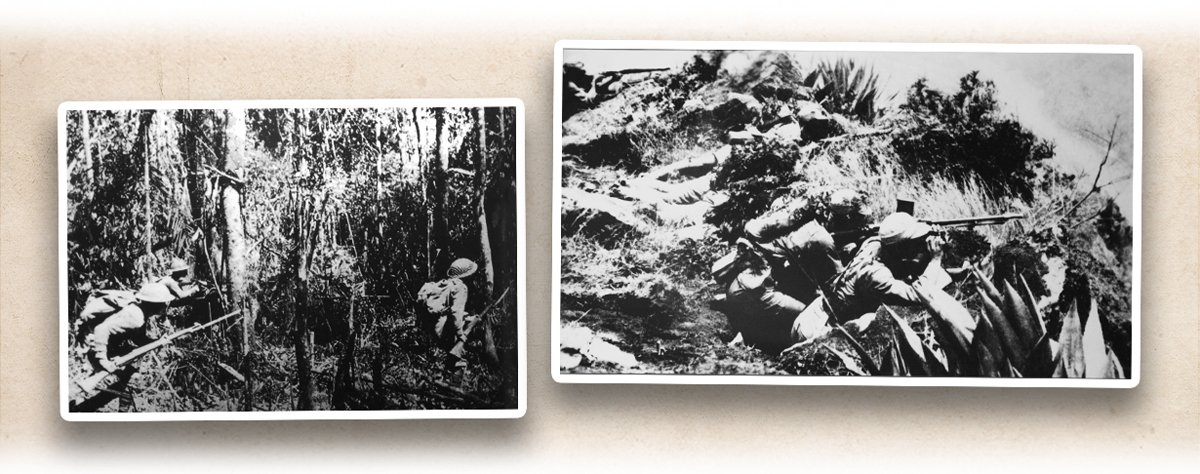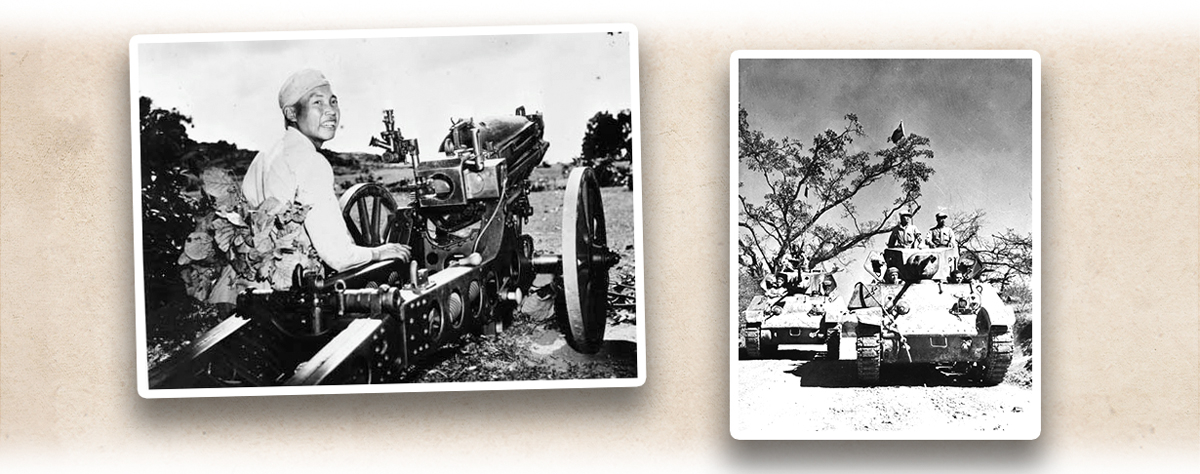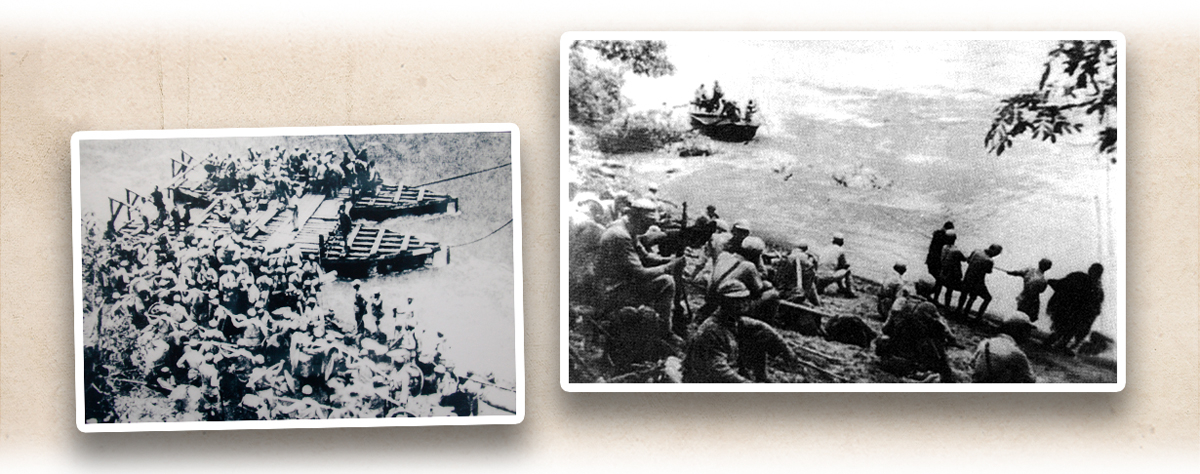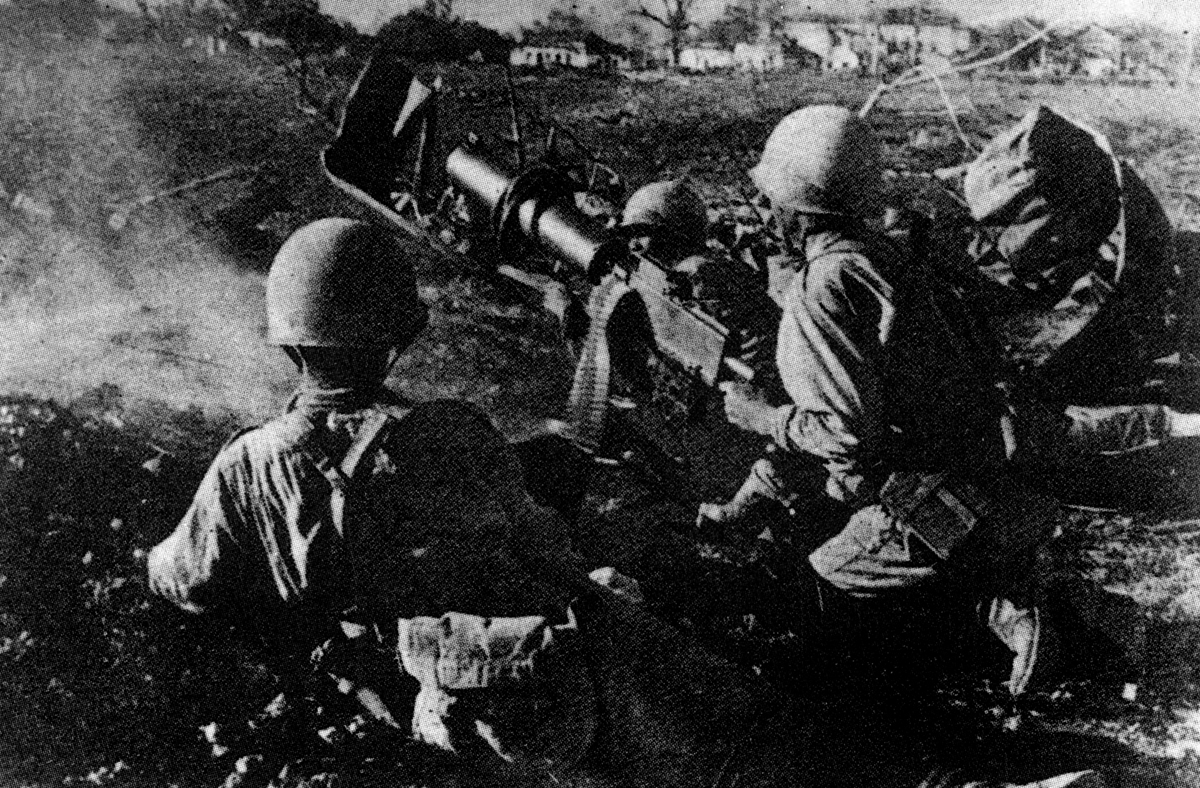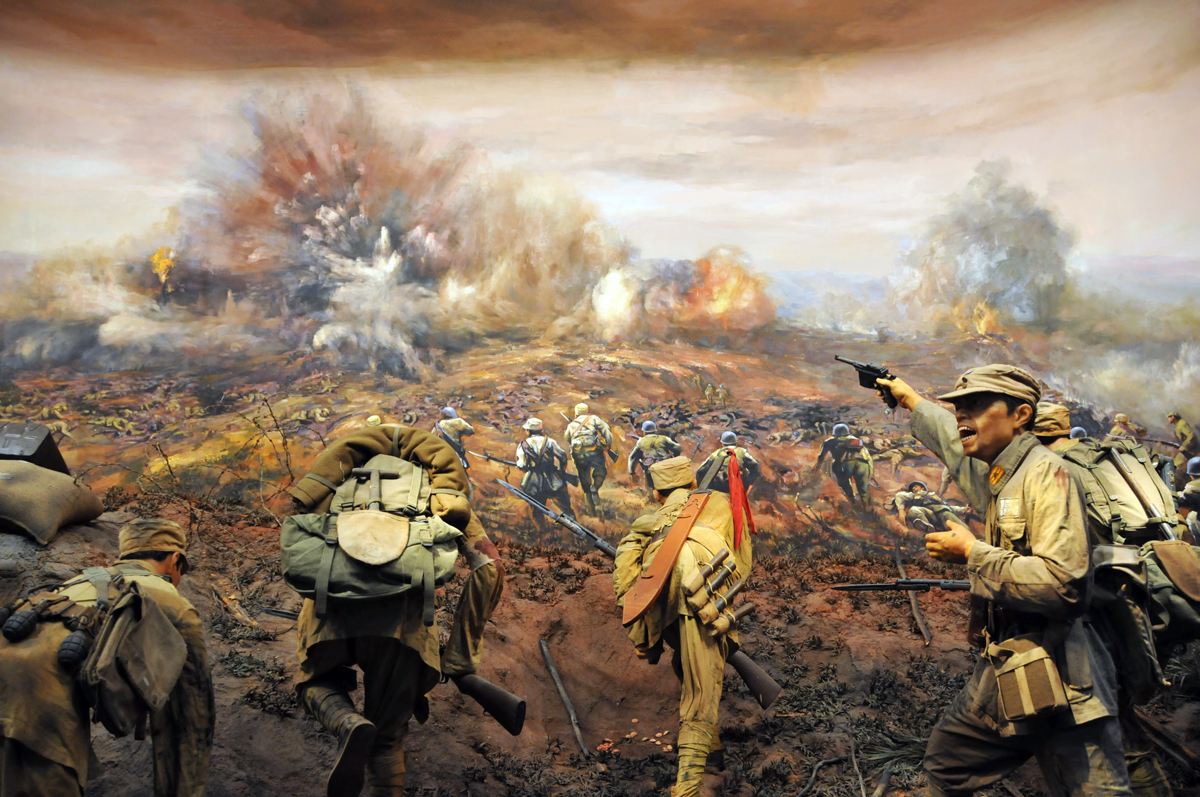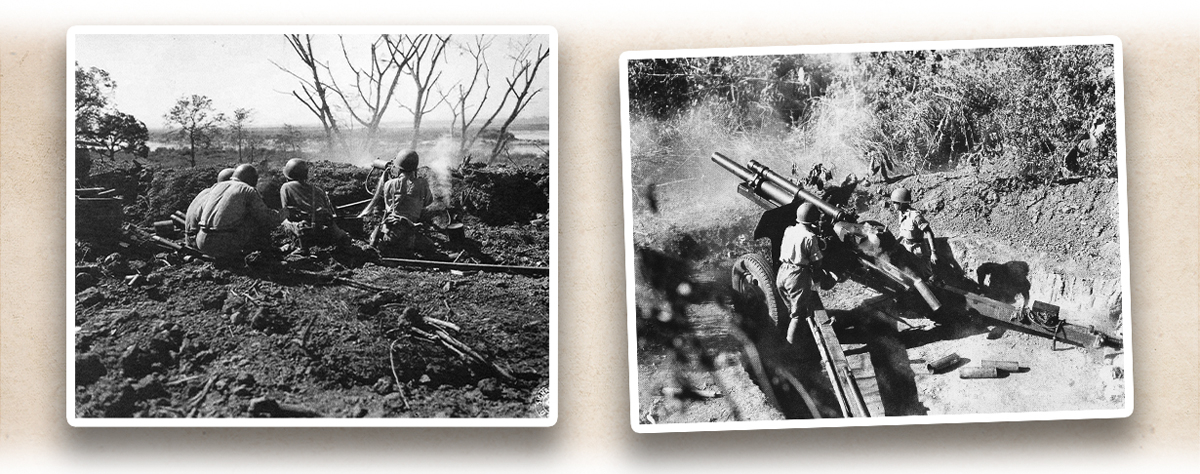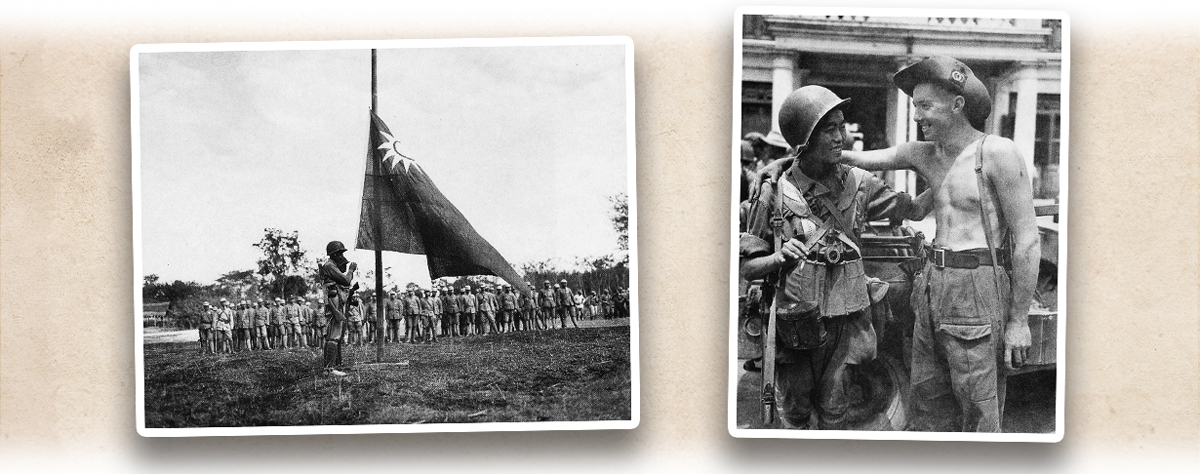As soon as it joined the Allies, China started carrying out its international responsibilities. The National Revolutionary Army (NRA) was dispatched to Myanmar (then known as Burma) to support the Allied efforts against Japan. Back then, Myanmar was still a British colony, but warfare in Europe had strained British rule over it. Meanwhile, China’s southwest border, especially the security of the supply routes from Yunnan Province (雲南) to Myanmar, became its major concern. On 23 December 1941, China and Britain signed a pact on the mutual defence of the Burma Road. Over the next three years, China sent two military expeditions to Myanmar to fight against Japan.
Japan invaded Myanmar from the beginning of 1942 and occupied its biggest city Yangon (then known as Rangoon) in March that year. At Britain’s request, China dispatched around 100,000 soldiers commanded by Luo Zhuoying (羅卓英), Du Yuming (杜聿明), and Joseph Warren Stilwell, the Chief-of-Staff in the China-Myanmar-India War Zone, to Myanmar between March and August 1942. The expeditionary force made significant advances in Yenangyaung but eventually retreated in defeat. Some retreated to China, some to India.
The second expedition took place between early 1943 and March 1945. Initially, the expeditionary force was split into two groups. Some 120,000 soldiers led by Stilwell, Zheng Dongguo (鄭洞國), Sun Liren (孫立人), and others were known as the Chinese Army in India. Another 160,000 troops of the Chinese Expeditionary Force positioned in west Yunnan under the command of Wei Lihuang (衛立煌), Song Xilian (宋希濂), and others. Claire Lee Chennault commanded the 14th Air Force reconstituted from the Flying Tigers in combat. The expeditionary force won several fierce battles and in January 1945, the Chinese Army in India and the Chinese Expeditionary Force in west Yunnan converged in Mongyu, Myanmar. In March, the Chinese Army in India captured Kyaukme joined forces with the British army and soon made their triumphant return in batches. The expedition to Myanmar was a major success in China’s strategic counteroffensive.
|
|
The expedition to Myanmar was the first time for China to have fought on a foreign land since the First Sino-Japanese War during 1894-95. What was its significance? |
|
|
See answer below. |
The photos show the Burma Road and the “Hump” airlift route cross the Himalayas during World War II when Myanmar and India were British colonies. After Myanmar was lost to Japan, securing India and China’s communication channels became crucial. Sending expeditions to Myanmar was necessary for China and the Allies.
Left: The Burma Road stretching over the mountains in Myitkyina in northern Myanmar during World War II. The Burma Road stretched from Kunming (昆明) in Yunnan, China, to Lashio in Myanmar. The construction of this 1,453km-long road started in the spring of 1938 and open to traffic in December of that year. It went through several upgrades afterwards. The Burma Road served as a key channel for international supplies and forces to enter China’s rear area on the southwest, thus greatly contributing to its resistance against Japan.
Right: US C-46 Commando loaded with supplies for China flying through the “Hump” route over the Himalayas. Japan managed to cut off the Burma Road soon after the Pacific War erupted. Left with no choice, China and the United States established the “Hump” route between Kunming in China and Assam in the northeast India to transport strategic supplies. The “Hump” route was named after the mountain peaks the pilots had to fly over. Flying the “Hump” was dangerous but necessary. The United States Air Force sent 65,000 tonnes of munitions and supplies to China via this route from April 1942 to August 1945. Over 500 planes crashed and more than 1,500 lives were sacrificed during the missions.
Left: Japan seized the Yenangyaung oil field in April 1942. Middle: a news story about the Chinese Expeditionary Force’s victory in Yenangyaung. Right: Dai Anlan (戴安瀾), the Commander of the 200th Division of the NRA, died on the battlefield in Myanmar.
The Chinese Expeditionary Force first entered Myanmar in March 1942. On 9 April, the Japanese took the Yenangyaung oil field and attempted to encircle the British forces there. The expeditionary force repulsed the Japanese and relieved more than 7,000 British soldiers, over 500 British and Myanmar war prisoners and American missionaries and journalists. However, it was defeated and forced to retreat. Part of the force retreated to China via the Kumon Bum Mountains where the Division Commander Dai Anlan died. The rest of the force, led by Division Commander Sun Liren, went westward to India and became known as the Chinese Army in India. The NRA inflicted 56,480 casualties during the expedition, over 30,000 of whom died when crossing the Kumon Bum Mountains on the China-India-Myanmar border. British casualties reached 13,000 while the Japanese casualties stood around 4,500.
The second expedition was made between early 1943 and March 1945. The Chinese Army in India launched an attack eastward while the Chinese Expeditionary Force in west Yunnan advanced westward. Myanmar, as well as the China-Myanmar border, became a major theatre for the Allied counterattack. Left: the Chinese Army in India, the British, and the American forces jointly launched a counterattack in north Myanmar in October 1943. Right: the Chinese Expeditionary Force in west Yunnan fighting by the Salween River that flows through China and Myanmar. The part flowing in China is known as Nu River (怒江) .
From 3 to 9 March 1944, the Chinese Army in India attacked and defeated the Japanese at Walawbum. The former received American military training in India and was equipped with heavy firepower, such as US-made howitzers (left) and tanks (right).
In May 1944, the Chinese Expeditionary Force stationed in west Yunnan crossing the Nu River as part of the counteroffensive against Japan.
From 11 May to 14 September 1944, the Chinese Expeditionary Force in west Yunnan advanced on Tengchong (騰衝), Yunnan. Left: Chinese sappers blowing an opening in the 20-foot thick city wall while their fellow soldiers prepared to storm the city. Right: fierce street fighting between the Chinese Expeditionary Force and the Japanese in Tengchong. The battle ended on 14 September 1944 with the expeditionary force reclaiming Tengchong.
On 10 May 1942, Japan captured Tengchong, a city of strategic interest in west Yunnan near the China-Myanmar border. On 11 May 1944, the Chinese Expeditionary Force crossed the Nu River to launch an offensive in Tengchong and met a strenuous engagement with Japan. Although Japan only had 2,700 soldiers in Tengchong, the robust fortifications including the sturdy Tengchong city wall served as its strong defence that necessitated nearly 50,000 expeditionary force to encounter. The recovery of Tengchong and the annihilation of the Japanese were at a high cost of 20,000 Chinese casualties. Tengchong was the first Japanese-garrisoned city the NRA reclaimed since the War of Resistance.
The Chinese Army in India fighting the Japanese in Myitkyina. The battle lasted from 17 May to 3 August 1944 and ended in China regaining the control of this transportation hub.
On 4 June 1944, the Chinese Expeditionary Force in west Yunnan advanced on Mount Song (松山). On 7 September, the Japanese forces at Mount Song were wiped out. The panoramic depiction shows the expeditionary force capturing the summit of Mount Song in the battle.
In the Battle of Bhamo from October to December 1944, the Chinese Army in India recaptured the city, an important hub on the Ledo Road. The photo shows the Chinese Army in India firing at the Japanese army at Bhamo.
Left: In January 1945, the Chinese Army in India and the Chinese Expeditionary Force in west Yunnan converged in Mongyu, Myanmar. Right: soldiers greeting each other as the Chinese Army joined forces with the British Army in Kyaukme, Myanmar, in March 1945. As the Allied powers reunited, the Burma Campaign ended in Japan’s loss of Myanmar and the Allies’ complete victory.
During the second expedition, the Chinese Expeditionary Force (consisting of the Chinese Army in India and the Chinese Expeditionary Force in west Yunnan) suffered heavily. The annihilation of 69,000 Japanese soldiers inflicted a huge cost of 85,000 Chinese casualties (History of Japan’s Ground Force recorded that 230,800 Japanese soldiers were mobilised and 160,400 were killed in the Burma Campaign). China recovered 38,000 square kilometres of territory in west Yunnan and more than 50 towns and cities covering 130,000 square kilometres were relieved in Myanmar. Altogether, the gains were remarkable.
|
|
The expedition to Myanmar was the first time for China to have fought on a foreign land since the First Sino-Japanese War during 1894-95. What was its significance? |
|
|
Myanmar occupied a strategic position connecting the China theatre and the Pacific theatre in China’s War of Resistance against Japanese Aggression. It was also the main war zone in Southeast Asia. The two Chinese expeditions to Myanmar against Japan supported the Allies in China, India, and Myanmar theatres and secured international transport routes in southwest China. The counteroffensive mounted by China in north Myanmar and west Yunnan repelled the Japanese from southwest China, reinforcing the Chinese army in the centre-stage battlefields and relieving the Allied powers. The operation also kept India from falling and created enabling conditions for the liberation of Myanmar. In History of the Centre-stage Battlefield of the War of Resistance Against Japanese Aggression (published by Jiangsu People’s Publishing House﹝江蘇人民出版社﹞in 2015), the expeditionary force’s counterattack in west Yunnan was described as “the only successful large-scale offensive in the centre-stage battlefield since the start of the War of Resistance”. Meanwhile, the joint operation with the Chinese Army in India, which resulted in the annihilation of Japanese forces in Myanmar was “the first successful large-scale operation on a foreign land in support of the allies since the First Sino-Japanese War”. Furthermore, the Chinese Expeditionary Force’s victories enhanced China’s national pride and international status. |
Source of most photos used in this feature piece: Fotoe and misc. photo sources.





